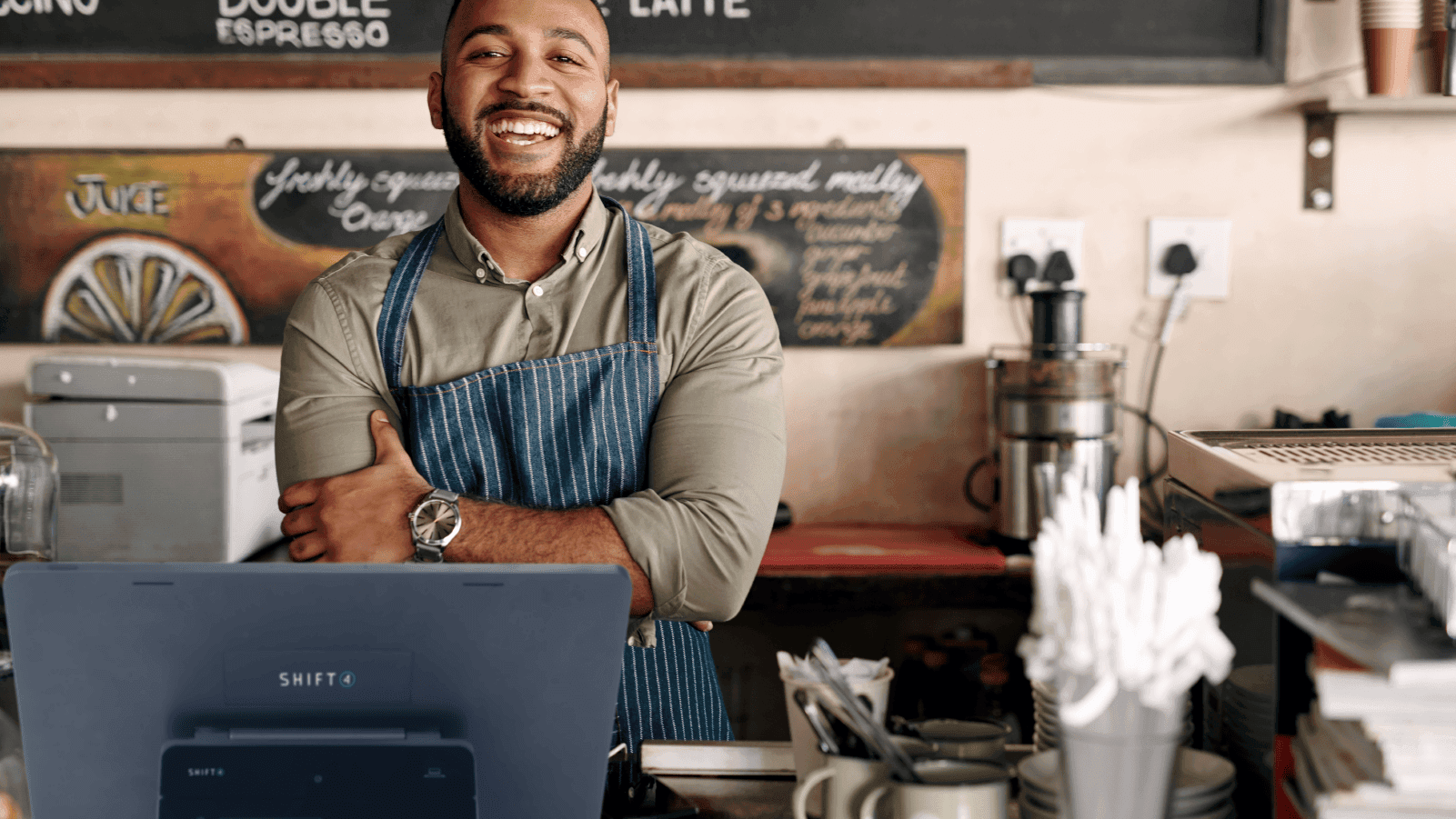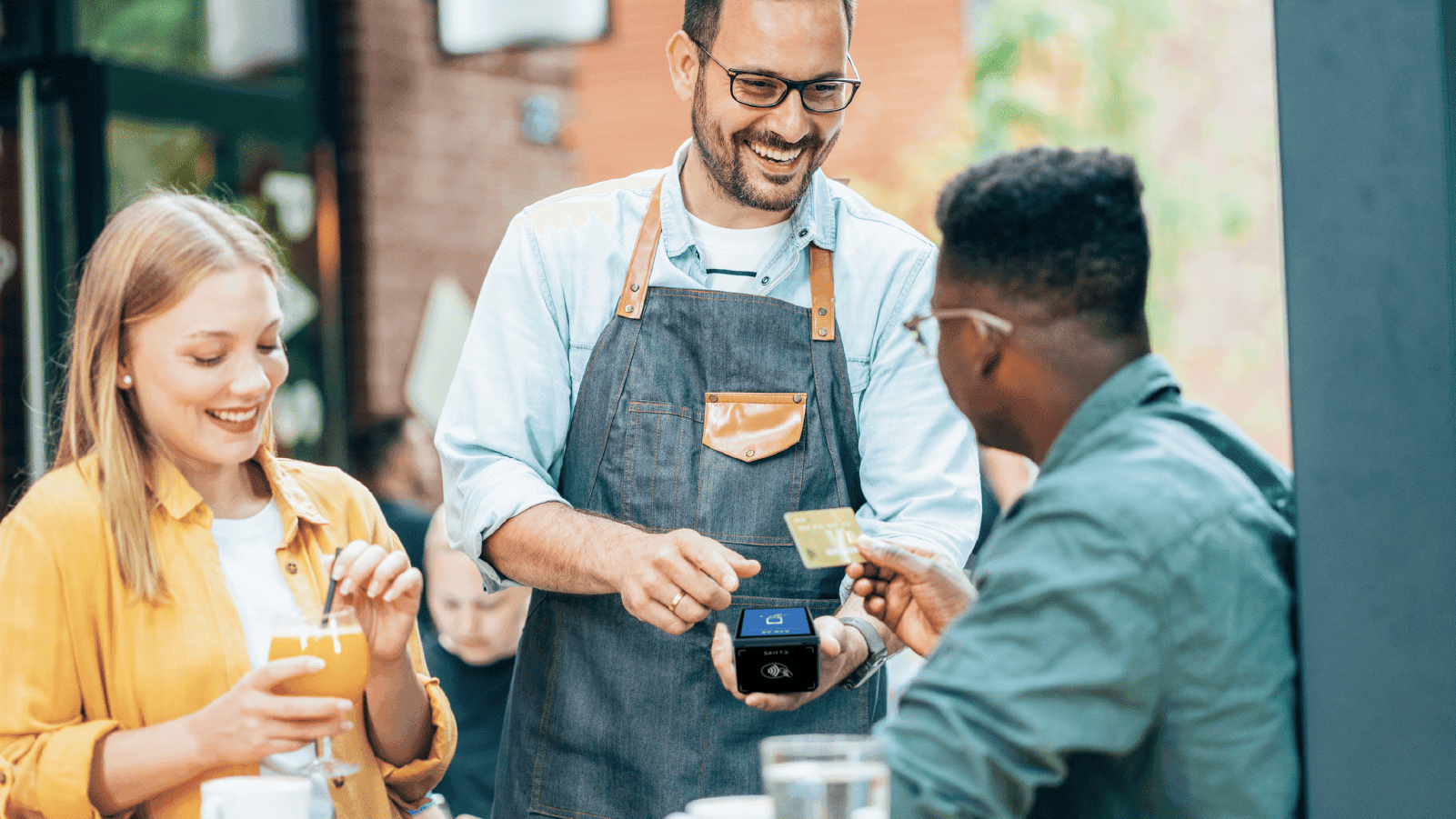What is a POS System, Exactly?
September 6th, 2022
Share:

What is a POS system, exactly? From simple old-school cash drawers to more complex new-age touch screens? Whether you are just beginning to research POS systems or looking to upgrade your existing technology, you’ll be able to make a more informed decision if you have more knowledge on the topic.
Understanding the technology that makes for a good Point of Sale (POS) system can be a bit challenging, but no need to worry — we’ve got you covered.
The Perfect POS System Isn’t Magic – It’s Having the Right Software and Hardware
Simply put, a POS system is made up of hardware and software that works together to manage operations and process sales. It performs a wide range of functions like ringing up food and drink orders, tracking employee time, calculating taxes, reporting on inventory levels, and more. When done right, a POS system controls and simplifies every aspect of your restaurant.
A typical POS hardware setup includes a touchscreen monitor, cash drawer, receipt printer, and a credit card reader. Additional optional hardware can include a barcode scanner, customer display, remote printers, or kitchen display system. There are three primary options for the software side of the equation: on-premise, cloud-based, and hybrid.
On-premise
With traditional or legacy POS systems, all the software and data is stored on a local server within the restaurant's four walls. To access any information related to the point of sale, like back office reporting or inventory, you'll have to be on-premise at the business location. Before cloud-based computing and the internet existed, on-premise was the only POS solution.
With this type of setup, you'll need to make an upfront investment for the hardware and software. When the software company introduces new features and updates (a.k.a. a new version), you'll likely have to pay to upgrade your software to the latest and greatest.
Cloud-based
With cloud-based POS systems, your data is stored on a server in a remote location — "the cloud" — and the point of sale connects to the cloud through the internet. Saving your business data in the cloud allows you to access and manage the back office of your POS system from anywhere via the internet.
Cloud-based POS systems are typically priced as a software-as-a-service (SaaS) business model. This can provide significant upfront savings, and you pay a monthly fee for ongoing support and software updates. The only drawback of a pure cloud-based solution is that internet connectivity is required to operate, so any connectivity issues can disrupt your business.
Hybrid
If you want the best of both worlds, a hybrid POS system is the way to go. Hybrid point of sale systems connect to the cloud for data backup and remote management, but also store data locally so that connectivity issues don’t disrupt operations. SkyTab POS utilizes a hybrid approach to deliver the best possible experience.
The ABCs of POS
Now that you have a solid understanding of how a POS system is set up, let’s dive into how it all works during a traditional dining experience and how SkyTab POS delivers an enhanced guest experience.
The Arrival
A party of four walks into your restaurant during prime dinner hours. Typically, they’d have to wait around for upwards of 30 minutes for a table. But, thanks to a simple reservation button on your website, they were able to reserve a table in advance online — and all your host needed to do was seat them.
Now let’s imagine that the same party of four forgot to make a reservation prior to arriving on a busy evening. An extended wait time would typically drive potential customers away. With a modern POS system like SkyTab, your host can easily manage reservations, walk-ins, and the waitlist in one place.
With the click of a button, your FOH team can alert the waiting guests that their table is ready with a SMS text or pre-recorded phone call. Now your guests can use the wait time to grab a drink at the bar or do some shopping down the street — and you won’t need to worry about losing business.
The Order
Next, a server walks over with a pen and paper ready, greets the table, takes their drink order, and possibly their app and entree order too. Once the order is collected, the server would then walk over to the POS system and input the order they wrote down on the piece of paper.
With SkyTab POS, this entire process is streamlined. Rather than writing down the order, the server can input the order into SkyTab Mobile which routes directly to the POS. Alternatively, restaurants can print a QR code on table tents, placemats, or on the menu itself for customers to scan and order directly from their phone. The order is sent directly to the POS system and routed to the appropriate prep station printer or kitchen display system in both scenarios.
The Check
When it comes to paying the check, it’s typically a multi-step process that plays out like a waiting game of tag between the customer and the server.
- The server drops the check and walks away.
- They wait and watch for the customer to place payment in the check presenter.
- The server circles back to the table and grabs the check.
- They walk over to the point of sale system and close out the bill.
- The server then returns the change or the credit card to the customer.
- The customer leaves a cash tip or fills out the merchant copy of the credit card receipt.
- The server comes back to the table to collect the tip and then back to the POS system to finalize the check if the customer used a credit card.
That's a whole lot of steps and time just to pay the bill. However, with a SkyTab POS system, customers can pay their bill on the spot using SkyTab Mobile. Alternatively, the customer can pay their check right from their phone by scanning the QR code that’s printed on the bill. Both options help eliminate the unnecessary back and forth, so tables turn faster.

Behind the Scenes and Back of House
Not only does a POS system help streamline your front of house operations as described above, but it also keeps everything behind the scenes in order. Let’s take a look under the hood of a POS system.
Inventory Management
POS systems can replace manual counts with time-saving and accurate automated processes. Menu items are automatically deducted from inventory counts when the server inputs an order and alerts the user when stock levels are running low.
Employee Management
Employees can clock-in and clock-out directly through the POS system, making labor management a breeze. You can also use your POS system to generate employee schedules, saving you time and resources.
POS Reporting
POS reports allow you to track key performance indicators (KPIs) so you always have a top-level view of your business and can make data-driven decisions about your operations. The real-time reports from your POS system will help you identify your best-selling items, most productive employees, and much more.
Third-Party POS Integrations
SkyTab POS includes an app marketplace to integrate directly with your favorite accounting software, online ordering solutions, marketing tools, or other business-related applications. With a direct integration to these third-party applications, you can centralize all your business programs in one place to streamline operations and reporting.
Marketing and Customer Loyalty Programs
Whether it’s a simple customer database or a full-blown customer loyalty program, your POS system can help you develop a network of customers to create marketing campaigns that drive repeat business. SkyTab offers a built-in loyalty program as well as various marketing tools to help you keep your customers coming back.
POS Systems are Your Business’ Backbone
We’ve come a long way since James Ritty’s cash register invention in the 1800s and IBM’s first computerized point of sale system in the early 1970’s. And thanks to modern technology, the barrier of entry for small businesses to implement high tech POS systems that only large enterprises could deploy 20 years ago has been greatly reduced. As a result, you have the same tools at your disposal to turn your small business into an empire.
FAQs About POS Systems
What is a POS system?
A POS system, short for Point of Sale system, is a combination of hardware and software that works together to manage all aspects of your business.
Typically, a POS system can:
- Process sales
- Track inventory
- Calculate taxes
- Manage customer information
- Track employee hours and shifts
- Generate reports to help you understand your business performance
Do I need a POS system?
POS systems are beneficial for most businesses that deal with in-person transactions, especially restaurants. You can expect to see benefits like:
- Faster checkout times and quicker table turns
- Improved inventory management
- More accurate sales data and reporting
- Better customer service
- Reduced costs
What should I consider when choosing a POS system?
There are many POS systems on the market, so it's important to choose one that meets the specific needs of your business. Here are some factors to consider:
- Your budget
- The size and type of your business
- The features you need to run a smooth operation
- Ease of use
- Scalability for long-term growth